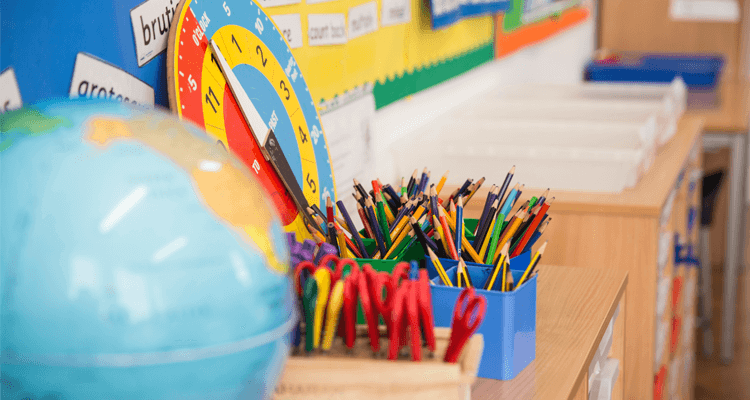Earlier this year, an Oklahoma teacher stood on a busy intersection and held up a hand-written plasterboard. “Teacher Needs School Supplies! Anything Helps” was scribbled across the front. She panhandled drivers for funds for school supplies—books, pencils, sharpies, the essentials. The news of this teacher’s plight soon went viral, igniting a conversation about the lack of funding for public schools. Then, this conversation turned to why some parents weren’t providing their children with school equipment. The conclusion: School supplies have skyrocketed in recent years, and things are way too expensive. Here’s how rising costs have made buying school equipment and supplies such a challenge.
The Rising Cost of School Supplies
In the 1960s, a box of pencils cost around 10 cents. Today, parents will spend as much as $10 on this stationery item. Then there are all the fancy new school supplies available in Walmart and Staples: One Direction pencil cases, Hello Kitty glitter pens, fluorescent highlighters, etc. And many classrooms mandate specific brands and types of supplies, making it harder for parents to find cheaper brands. All of these items add up, and for parents on a low income, supplies may be more than they can afford.
How Much Do Parents Spend on Supplies?
Research shows that school supplies cost parents, on average, $200 for an elementary school student, $330 for a middle school student, and $375 for a high school student. Another study suggests these back-to-school supplies cost as much as $669.28 per child. This amount includes $231.30 for clothes, $124.46 for shoes, and between $212.35 and $229.88 for electronic learning materials. Throw in specialty products and expensive brands, and it’s no wonder that so many parents are struggling.
Some schools have communal supplies that everyone can use, which can lighten the load for cash-strapped parents. Still, these items are few and far between. State-level funding has been cut, and schools are reluctant to increase property taxes to cover the shortfall. The result? Schools have old, inferior products or, often, no supplies at all.
Why Are Teachers Spending Money on School Supplies?
Like the Oklahoma teacher who panhandled on the corner of Interstate 44, educators are taking things into their own hands. Research suggests that teachers spend, on average, $500 of their own money on classroom supplies, while one in ten spends $1,000 or more. Collectively, teachers spend $1.6 billion on school supply costs. Another study says that teachers pay for 77 percent of all school supplies—significantly more than schools and parent–teacher groups. Why do they do it? “Their little faces are just devastated when they don’t have books and colors,” says second-grade teacher DeAnn Moran, who works for Moore Public Schools in Oklahoma. “It’s amazing what that can do for a child.”
The Problem for Parents
The lack of school supplies for all also puts an increased burden on parents. Many parents are asked to purchase supplies in excess of what would be needed for their own child, to help supplement supplies for families who can’t afford the increased expense. And some schools put the supplies in a communal pot to be distributed to all the students, which can be frustrating for parents who’ve bought nicer, brand-named supplies specifically for their children.
How to Save Money on School Supplies
So, what can parents do if they want to save money on supplies? Thrift stores and flea markets serve as alternatives to big name retailers, and auction sites have cut-price stationery and equipment. Using a coupon code and watching for sales could also reduce the price of school supplies.
As schools cut funds and retailers increase prices, purchasing school supplies has become a problem for teachers and many parents. Do you have any suggestions on how to solve this problem? Share your ideas and any tips on how to keep the costs of school supplies down in our comments section below!




































